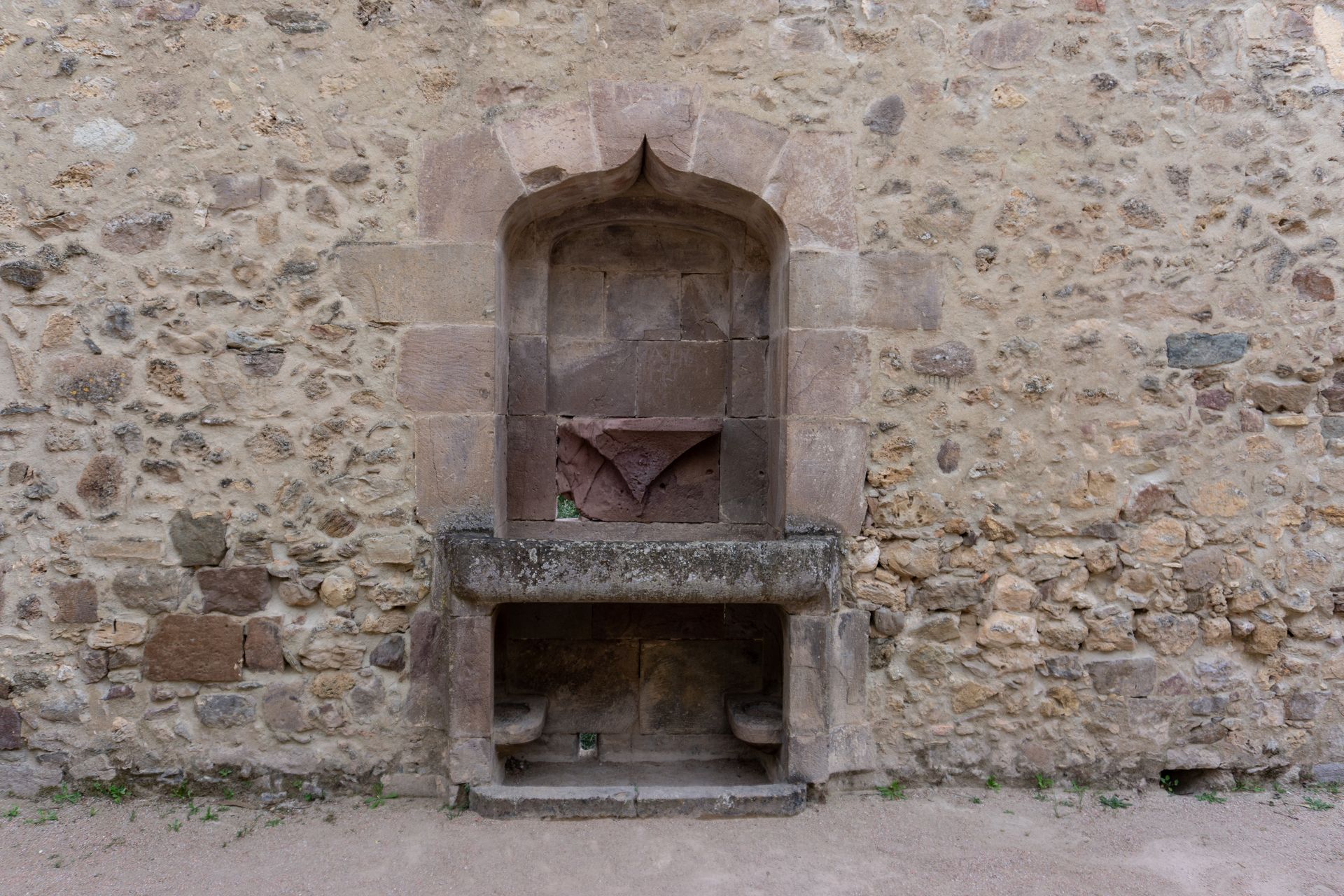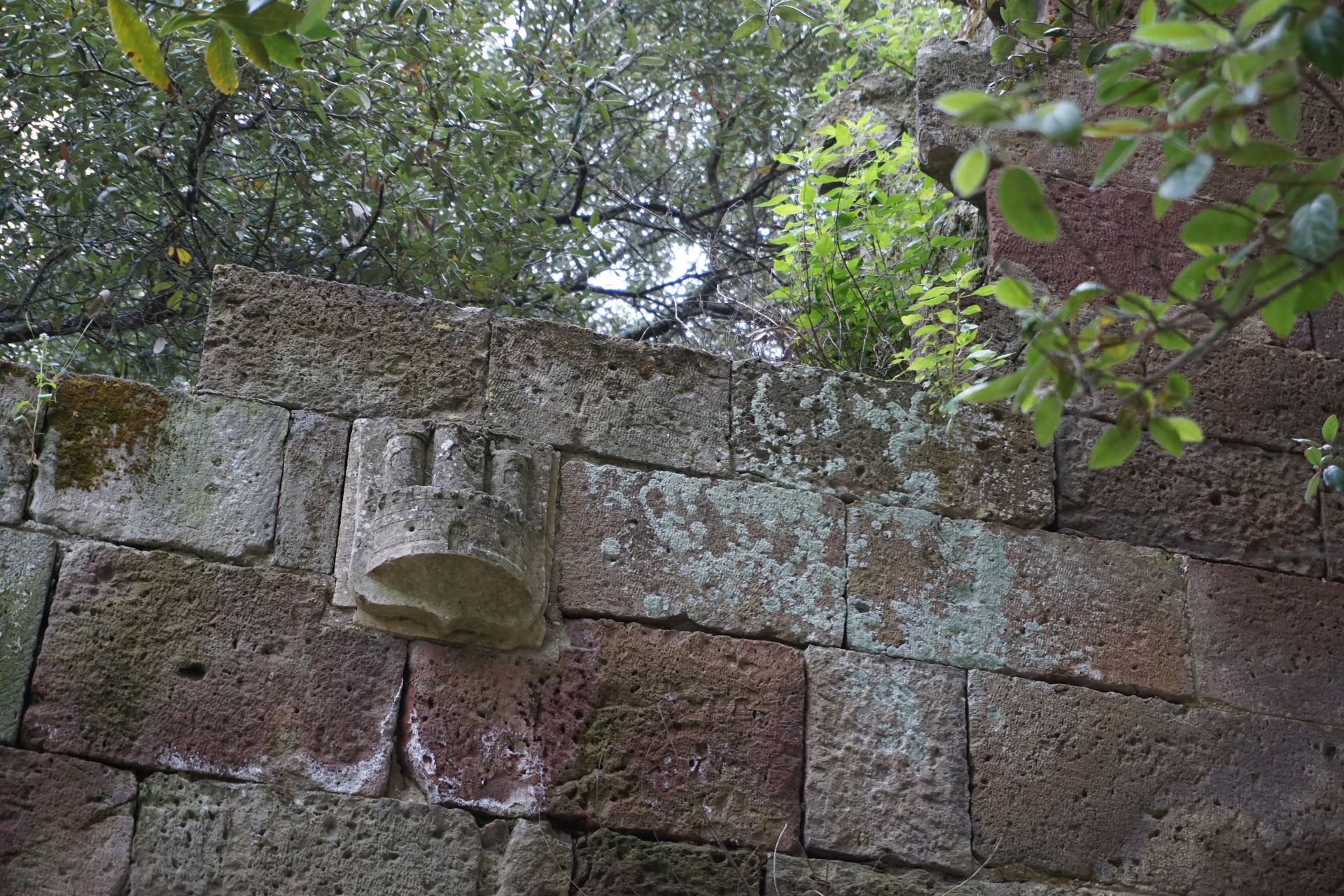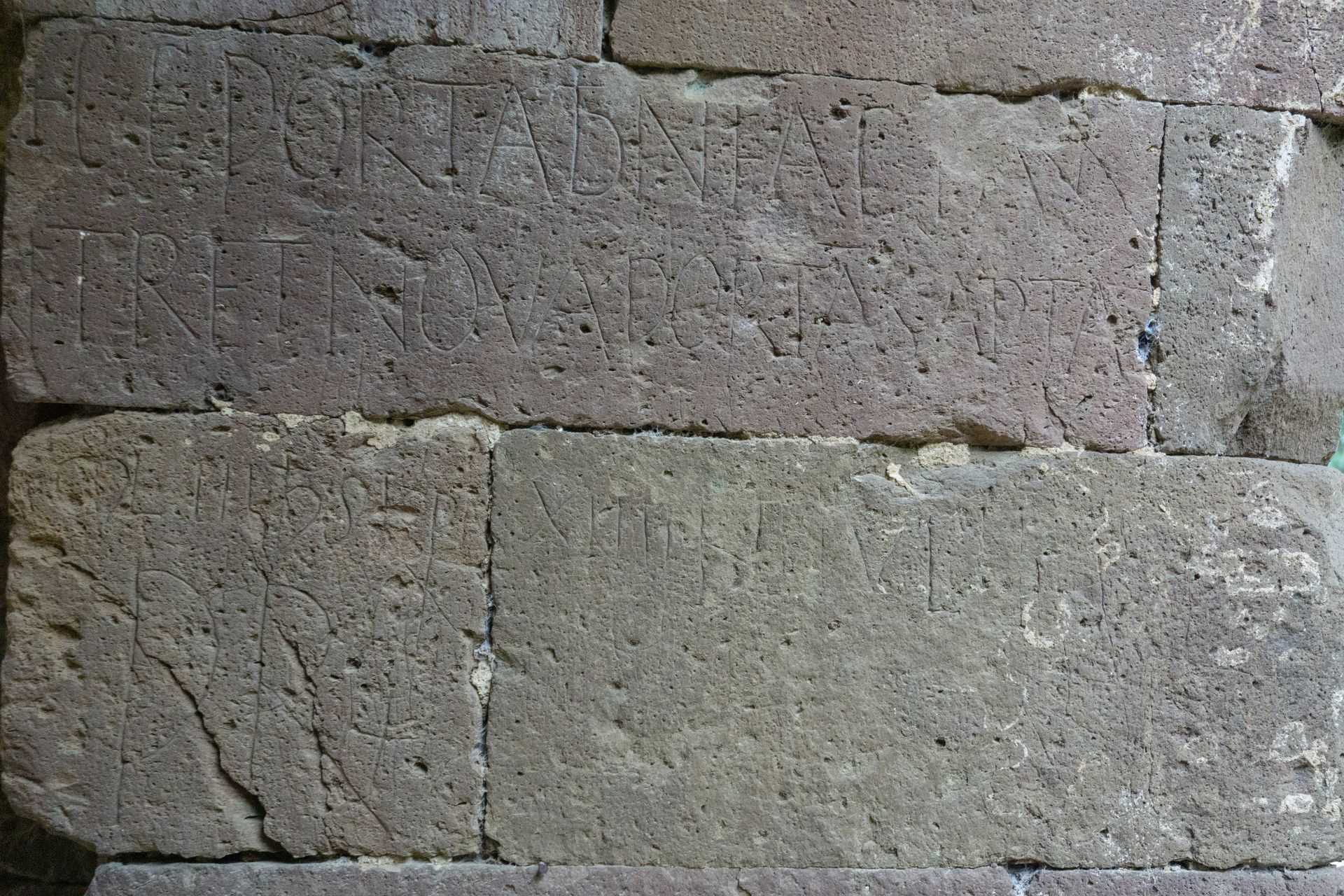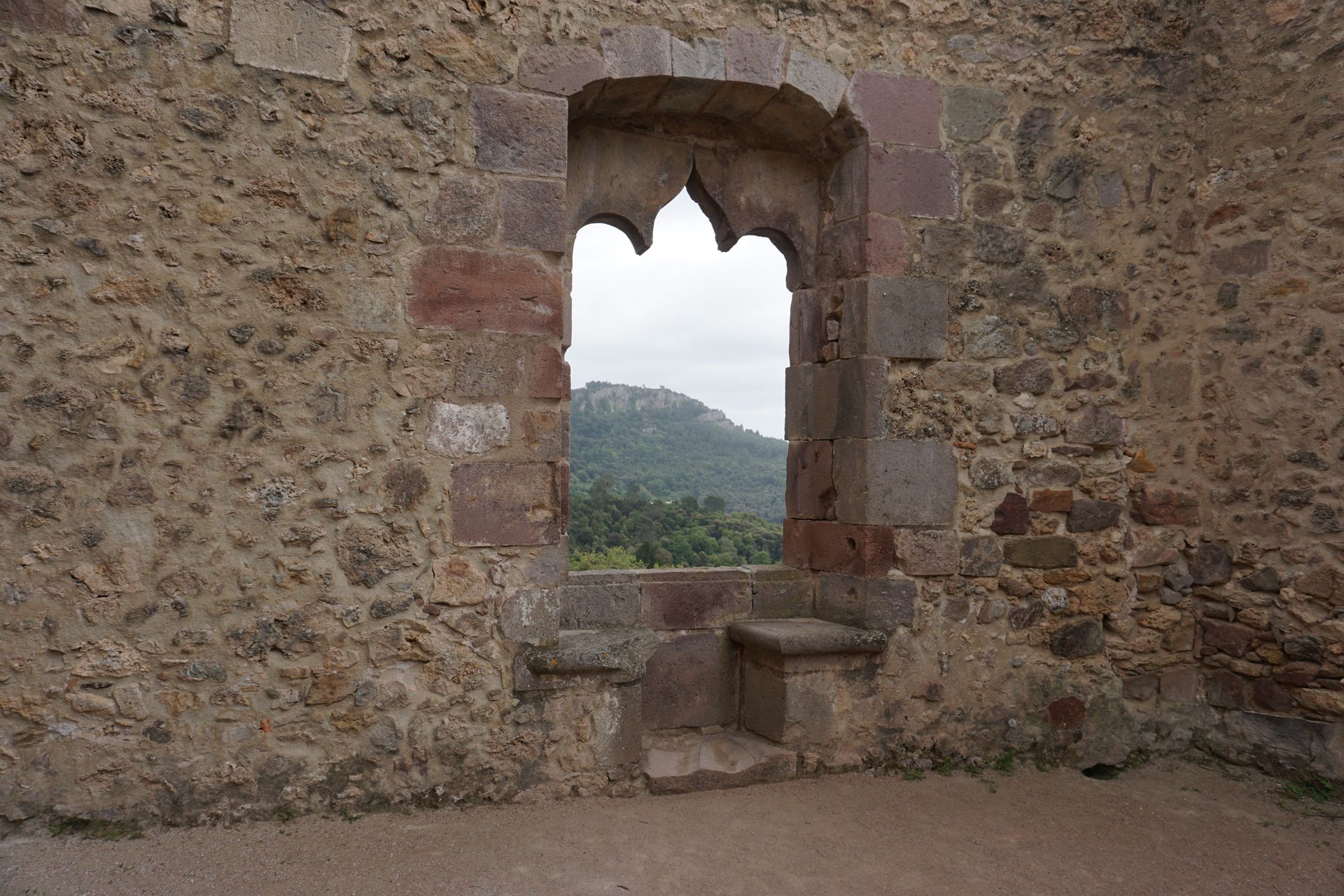Historical and popular tradition identify the collection of structures still visible within the Aymerich Park as the remains of the medieval castle of Laconi.
Study of the wall’s stratigraphy has revealed the work of laborers that toiled at different times and under different conditions. The analysis notes the presence of one body of work older than the others: a rectangular structure, perhaps a tower, traversed by a monumental barrel-vaulted passage and preceded by an entrance of rounded arches which originally lead to an ample courtyard. On the right side of the passage is an epigraph set into multiple ashlars which cites the presence of a door and indicates a date: 1053. Though clear in its writing, this inscription presents interpretive difficulties both epigraphically and archeologically; it is not impossible that it was originally part of a different structure and simply used here as building material.
The salient features of this architecture are similar to others that have been restored from the prolific roman art of fortification. Given the historical events in which it is situated, the chronological context of reference seems to be near the beginning of the 13th century. Adjacent to the south-west facing door rises the true palazzo, a noble mass of walls, doors and windows embellished by Catalonian-gothic cornices and which was the residence of the feudal lords of Laconi until the first half of the 19th century.
Also of notable interest is a colonnade which precedes a rectangular opening; measuring 35 meters long and divided into different spaces, it opens onto the ample courtyard. Although the Park’s current arrangement is more recent and differs from its historical configuration, the prestigious jurisdiction of the castle can nevertheless be considered an authoritative witness of the modern history of Laconi.
 Aymerich Castle, interior (Ph. Carlo Coni)
Aymerich Castle, interior (Ph. Carlo Coni) Aymerich Castle, detail of coat of arms (Ph. Carlo Coni)
Aymerich Castle, detail of coat of arms (Ph. Carlo Coni) Aymerich Castle, inscription (Ph. Carlo Coni)
Aymerich Castle, inscription (Ph. Carlo Coni) Aymerich Castle, detail of gothic-catalan style window (Ph. Carlo Coni)
Aymerich Castle, detail of gothic-catalan style window (Ph. Carlo Coni)